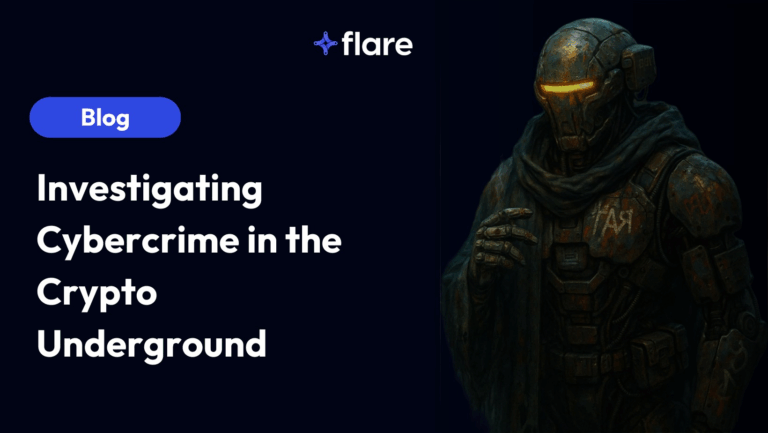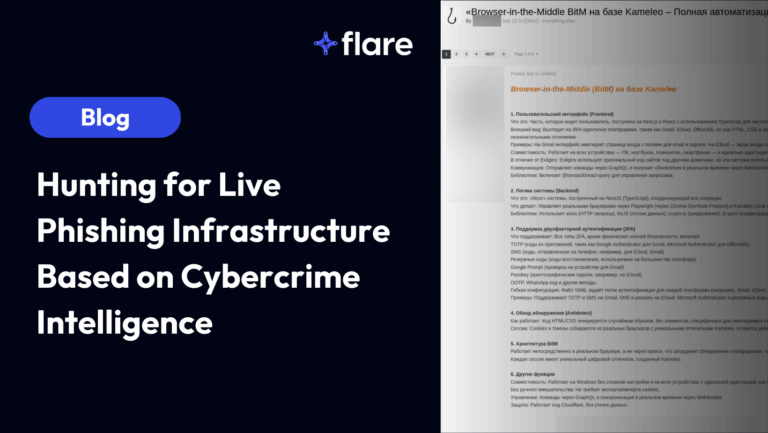
In a data driven world, information means empowerment. Security professionals often worry that threat actors may find exposure that could lead to a data breach. Whether from chatting on dark web forums or purchasing stolen credentials, malicious actors have access to vast quantities of data about different devices, attack methodologies, and vulnerabilities.
External threat intelligence empowers security teams to have access to the same types of information that threat actors have. When you effectively and efficiently incorporate the four types of threat intelligence into your security monitoring, you get the context necessary to defend your organization against attacks.
What is Threat Intelligence?
Threat intelligence involves collecting, processing, and analyzing data about malicious actors’ motives, targets, and behaviors to understand past, current, and future threats more effectively. This evidence-based knowledge about threat actors includes:
- Context, including industry vertical, device types, and geographic regions targeted
- Implications for insight into likelihood or potential impact
- Indicators of Compromise (IoCs) used to look for advanced persistent threats
- Information about about current or new threats, like new ransomware variants or recently reported vulnerabilities
- Mechanisms that attackers use during attacks
Threat Intelligence: General Sources
Open-source cyber threat intelligence aggregates information that is publicly available on the internet. Security teams can leverage community projects that aggregate threat intelligence, including security companies whose researchers share their findings publicly. Some examples of open-source intelligence include:
- Security researcher or corporate blog posts
- News reports
- Public block lists
- Government websites, like the Cybersecurity and Infrastructure Security Agency (CISA)
- Information Sharing and Analysis Centers (ISACs)
Security teams can integrate open-source intelligence feeds into their security monitoring technology stack to help them enhance their detection alerts. These feeds usually provide updated information about:
- Phishing scams
- Malware
- Bots
- Trojans
- Adware
- Spyware
- Ransomware
Some examples of open-source threat intelligence feeds include:
- The Federal Bureau of Investigation (FBI) InfraGuard
- CISA Automated Indicator Sharing
- SANS Internet Storm Center
- Virus Total
While open-source threat intelligence feeds provide valuable information, they may not give you everything you need to know.
Types of Threat Intelligence: How They Differ
When you understand the four types of threat intelligence, how they differ, and how to use them, you can more effectively defend your company’s assets.
Technical Threat Intelligence
Technical threat intelligence is the information that security teams usually get from their open-source intelligence feeds. Security teams use technical threat intelligence to monitor for new threats or investigate a security incident.
Some additional examples of technical threat intelligence include:
- Attack vector that malicious actors use
- Command and Control (C&C) domains
- Vulnerabilities exploited
- Infostealer logs
- Common Vulnerability and Exposure (CVE) data
Security teams use technical threat intelligence to:
- Proactively threat hunt to find threat actors who bypass detections
- Investigate security alerts
- Locate forensic evidence
Strategic Threat Intelligence
Strategic threat intelligence provides high-level information so that senior leadership can make decisions based on the threat landscape. Since strategic threat intelligence focuses on non-technical information rather than specific threat actors, indicators, or attacks, collecting the data may not be a continuous process.
Some examples of strategic threat intelligence include:
- Regulations
- Policies published by industry organizations
- Regional and national news media
- Social media discussions
Strategic intelligence feeds can help senior leadership understand:
- Data breach likelihood when engaging in a risk assessment
- Organization’s cybersecurity posture when setting budgets
- Changes in the regulatory compliance landscape impacting the organization’s compliance capabilities
Tactical Threat Intelligence
Tactical threat intelligence focuses on malicious actor tactics, techniques, and procedures (TTPs), providing insight into potential attacks and how malicious actors can compromise a company’s IT environment. Security operations centers (SOCs), IT managers, network operations centers (NOCs), and other senior IT professionals use tactical threat intelligence to prevent cyberattacks by gaining visibility into the organization’s attack surface, including information about compromised credentials or infected devices.
Some examples of tactical threat intelligence include:
- URL and IP blacklists
- Malware trends and signatures
- Ransomware
- Network traffic patterns
- Phishing scams
To find tactical threat intelligence, people can use open-source intelligence (OSINT) through:
- Dark web monitoring
- Attack group reports
- Malware samples and incident reports
- Campaign reports
- Human intelligence
Technical professionals can use tactical threat intelligence to:
- Test their security technologies and processes
- Fine-tune security tools
- Find gaps in their security controls
Operational Threat Intelligence
Operational threat intelligence gives security teams actionable information relating to threat actors’ nature, motive, timing, and methods that help them prevent or proactively detect an attack. Since operational threat intelligence focuses on an attack’s human rather than technical elements, open-source feeds are rare, creating challenges for cyber attack incident response teams, malware analysts, network defense teams, host analysts, and security managers.
Some examples of operational threat intelligence sources include:
- Clear and dark web chat forums
- Malicious actors’ social media
- Clear and dark web forums
Security professionals use operational threat intelligence to:
- Prevent or respond to planned attacks
- Create rules or signatures for their detection alerts
- Prioritize security update installation as part of vulnerability and patch management
Challenges When Gathering All Four Types of Threat Intelligence (and How to Overcome Them)
While gathering all four types of threat intelligence is critical to protecting a company’s IT environment, security teams often struggle when they try to collect and use it.
Too Difficult to Access and Understand
Technical, tactical, and strategic threat intelligence may be readily available. However, this information only gives you the “what” and the “how.” Operational intelligence gives you the “why” and, sometimes, the “when.” Without it, you may not be able to use the threat intelligence effectively. Simultaneously, this informational glue usually resides in anonymous, hard-to-find forums, social media, chat channels, and marketplaces that threat actors use. Even if you can access the communication channels, you may not be able to understand the conversations since malicious actors come from all over the world and not all of them speak English.
To solve this problem, you may want to find an automated monitoring solution that allows you to search these criminal forums using natural language processing. This type of technology enables you to gather everything you need and translates it into English.
Too Much Information
Collecting even one type of threat intelligence can be an overwhelming process. When you start trying to collect all four types of threat intelligence, the process can increase rather than decrease alert fatigue. With the extra data, you get more information. However, if you can’t properly correlate and analyze it, your security tools will generate too many alerts.
To overcome this challenge, you should look for threat intelligence solutions that help prioritize the collected data so that you can use it effectively. When looking for a solution, you want to find something that analyzes and prioritizes threats for you. Solutions that leverage artificial intelligence (AI) enable to create high-fidelity alerts that reduce – rather than increase- noise.
Too Much Time
Gathering threat intelligence manually is time-consuming, especially when it means scrolling through technical feeds, social media, news RSS feeds, Telegram channels, and chat forums. Even if you have the time to review all the information, you still need the time to compare everything and analyze it.
When you automate the threat intelligence collection, correlation, and analysis processes, you save time while upleveling your security program. Leveraging the analyzed data, you can test your current controls, find gaps across technologies and processes, and effectively fine-tune your security tools.
Flare: Automated Operational Threat Intelligence
By monitoring for external high-risk threats with Flare, you can automate the operational intelligence processes, like collection, correlation, and analysis. Our platform monitors malicious activity across the clear and dark web. Additionally, our platform helps you monitor illicit Telegram channels which have become the new threat actor communication platform. Our automation saves your team’s time, reducing the costs associated with gathering information.
Flare’s platform offers easy-to-use integrations so that your team can build threat intelligence monitoring into their workflows and across their communication tools. With our AI technology, we prioritize threats to reduce noise so your security team can leverage threat intelligence purposefully.
Try a free trial and get started in just fifteen minutes.





